Copenhagen: Everything you need to know about the city that's home to Princess Mary
Copenhagen is the world’s greenest city but also arguably Scandinavia’s liveliest and prettiest one. Here’s your insider’s guide to one of the world’s trendiest, and classic cities.

Travel
Don't miss out on the headlines from Travel. Followed categories will be added to My News.
Copenhagen is the world’s greenest city but also arguably Scandinavia’s liveliest and prettiest one. With its cycling culture and colourful historical houses lining canals, it’s a unique city that’s small enough to cover easily but bursting with culture and fantastic food and design experiences. And don’t forget Australia has one very much adored Princess in the ranks of the Danish royal family.
WHEN SHOULD I GO TO COPENHAGEN
After a long winter hibernation, Copenhagen comes alive in summertime and locals and visitors alike proclaim it a kind of utopia in the sunshine. However, this time is also prime tourist time, so if you prefer things a little less hectic and like the idea of a ‘cosy’ Christmas holiday, December can be a great bet, with the city hosting many Christmas markets and its people making merry friends with gløgg (Christmas mulled wine).
TOP TIPS FOR FAMILIES VISITING COPENHAGEN
EURO GEM WITH A SURPRISING FOOD CULTURE
WHAT MONEY IS USED IN DENMARK
Scandinavia is generally very advanced when it comes to cashless pay techniques, so cards are not only accepted but welcomed almost everywhere, as is Apple Pay, including in taxis (note: there are no Ubers in Denmark!). You can still grab old-fashioned Danish kroner (exchange rates vary but a good rule of thumb is 5DKK = $1) at ATMs around the city, just expect a surprised look on vendors’ faces when you proffer paper. Denmark is fairly expensive across the board, topped only by Norway, so get ready to wince when you realise you just paid $8.50 for a coffee.
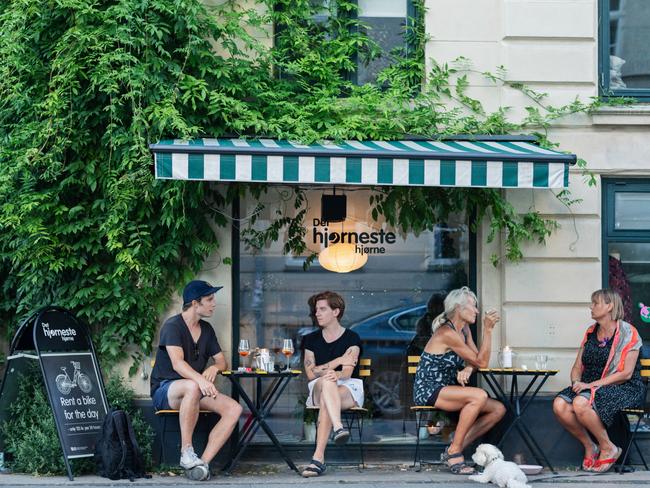
HOW TO GET FROM THE AIRPORT IN COPENHAGEN
Copenhagen’s Metro system is both highly effective and very relaxed and will deliver you into the city centre from the airport within 10-12 minutes, for around $5. The way to the Metro is well signposted. You can also buy a City Pass before you arrive in Copenhagen, which will give you unlimited travel to all zones of the city and to and from the airport. Buy it according to the time you’re spending in Copenhagen at citypass.dk.
PUBLIC TRANSPORT IN COPENHAGEN
Another option is to grab the Copenhagen Card, which at 87AUD, in addition to giving you unlimited transport, also lets you into 87 attractions and museums for free, making the initial outlay very worth it when you consider that entrance to one attraction will typically sit at around the 20AUD mark.
THE EUROPEAN CITY THAT’S OUR NEW NO.1
SCARIEST PLACE TO SPEND CHRISTMAS IN EUROPE
HOW TO GET AROUND COPENHAGEN
This is a city where over 70 per cent of locals are pedalling for transport, so if you can’t beat ‘em, join ‘em. You’ll be glad you did, as bike is the best way to cover ground in this city and you’re perfectly safe due to wide and extensive bike lanes (helmets are optional). You can either duck into one of the bike shops on every corner and hire one or download the Donkey Republic app and find one of the distinctive orange bikes near you anywhere in the city. Copenhagen also offers electronic City Bikes, which help you out a little if you’re lacking in push power.
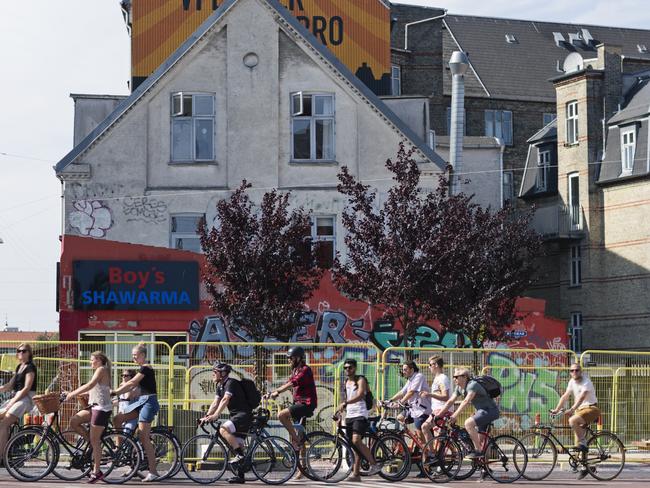
WHERE TO STAY IN COPENHAGEN
Accommodation, as with most things in Denmark, isn’t cheap. But you can stay right in the thick of central Copenhagen without compromising on style at the Kim Utzon-designed WakeUp Copenhagen for around $80 a night. Younger travellers should check out the AO Hotel & Hostel in Nørrebro (or North Copenhagen) with rooms from around $17, in an area teeming with hip hangouts. If the pursuit of living local in one of the city’s gorgeous apartments revs your engine, you’ll find a lot of residents renting out houses or rooms on
Airbnb for decent prices.
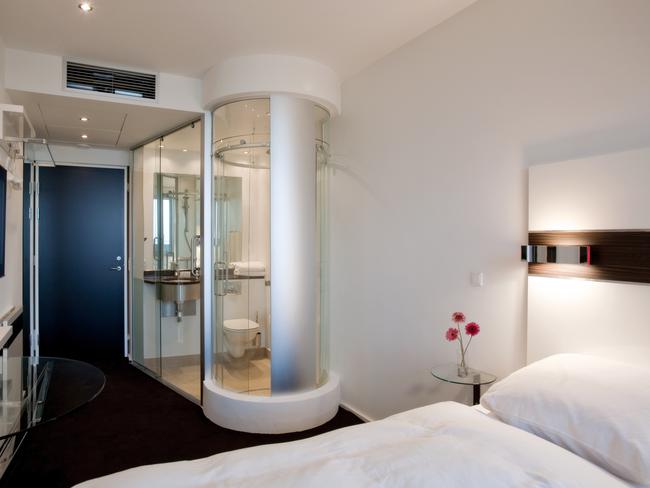
SPEAKING ENGLISH IN COPENHAGEN
Fear not if you’re Danish language skills are non-existent, you’ll rarely encounter a city dweller here who doesn’t enjoy speaking English. Do note though, that Scandinavians are known for being a little reserved in manner, so though they are very polite, don’t expect a rousing chat with strangers on the street – it’s a cultural thing.
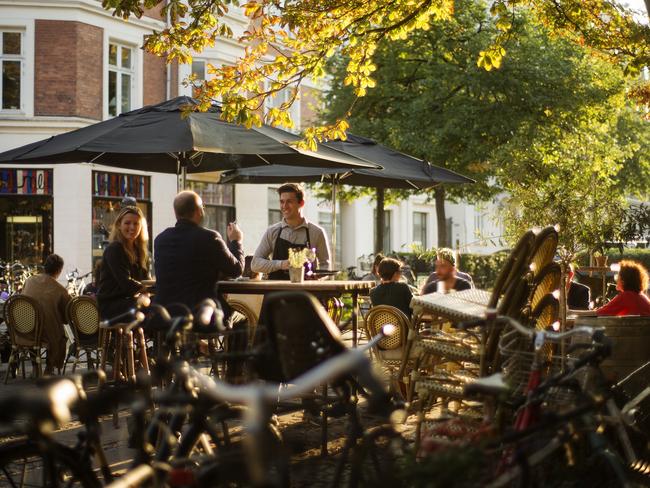
WHAT TO WEAR IN COPENHAGEN
Although Denmark is becoming a hotspot on the fashion circuit, the residents’ aesthetic is actually very practical when it comes to everyday wear. Firstly, you can wear your sneakers with everything; incredibly useful when it comes to biking or walking everywhere but also more than acceptable (read: stylish) when heading out to dinner in your evening wear. Think Jerry Seinfeld on bottom, floral dress for ladies or smart coat/dress pants for men on top. You’ll also rarely spot a Danish woman in make-up, so do as they do and relax your routine.
DISTRICTS IN COPENHAGEN
The city centre has plenty of shopping and some great museums but the surrounding boroughs are the place to go if you want a taste of local life. Vesterbro is the place to go for all-night music and some great eats in the lively Meatpacking District. Nørrebro has plenty of ‘hygge’ bars and hip restaurants and Østerbro has a classic Danish neighbourhood feel. Wind your bike through all of them and stop whenever you see something that takes your fancy.
CHRISTIANIA IN COPENHAGEN
Christiania is an ‘intentional community’, with its origins in anarchist movement and covering 19 acres of prime city real estate in the Christianshavn borough, the place is renowned for its cannabis trade, free-living lifestyle and the beauty of the ramshackle houses built there, as well as the unique way its approximately 1000 residents live. A must-see.
BEST FOOD IN COPENHAGEN
Denmark loves a good pastry treat, so if there’s ever a reason to ditch the calorie count, this is it. Plus, you can work them off on your bike. Take a tasty tour of the city’s best bakeries, including Lille in Refshaløeøn, Hart Bageri in Frederiksberg, Juno in Østerbro, Mirabelle and Andersen & Maillard in Nørrebro. Make sure you try the city’s famed cardamom bun.
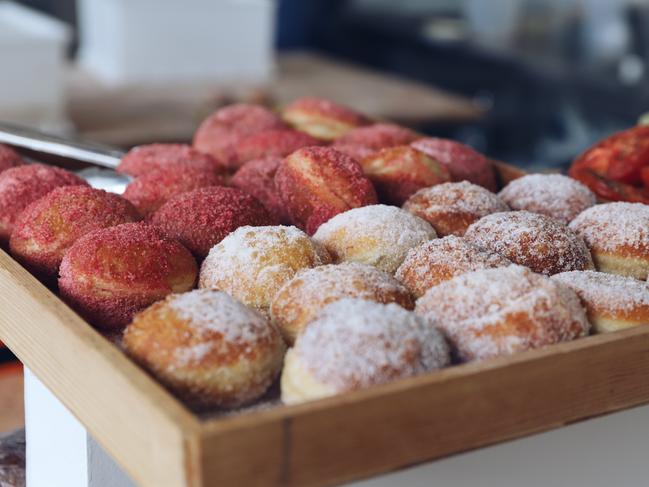
MUSEUMS IN COPENHAGEN
You can almost hear the collective sigh of travellers who have allocated a lazy Monday to seeing the city’s incredible museums: New Carlsberg Glyptoteket, Nationalmuseet, SMK, Design Museum Denmark, Louisiana and Cisternes are a great selection to see. But don’t count on a Monday, this is the weekly day of rest for the culture hubs.
COPENHAGEN THEME PARK
Bakken is an easy 20 minute train trip out of Copenhagen in the middle of a beautiful deer park. Opened in 1583, Bakken preceded the next theme park in Austria by almost 200 years and you can take a ride on the park’s most popular attraction, a rollercoaster open since 1932.
Originally published as Copenhagen: Everything you need to know about the city that's home to Princess Mary


